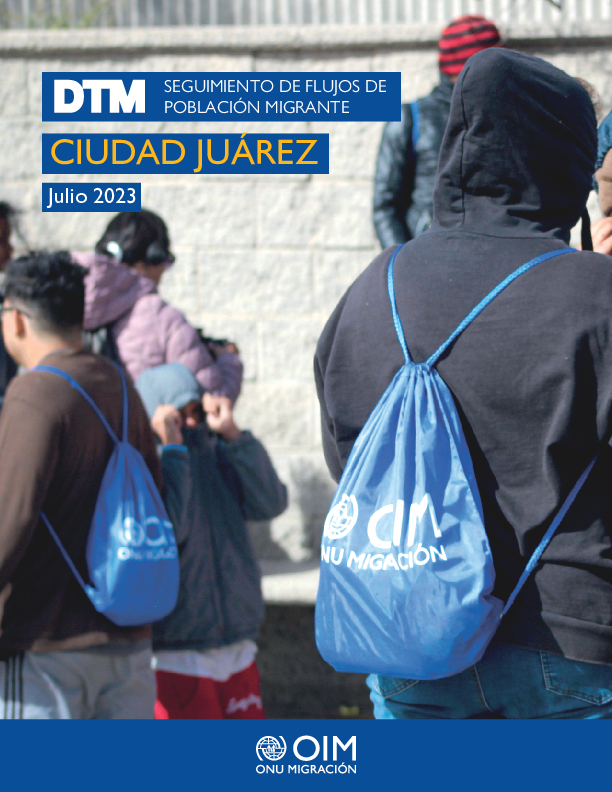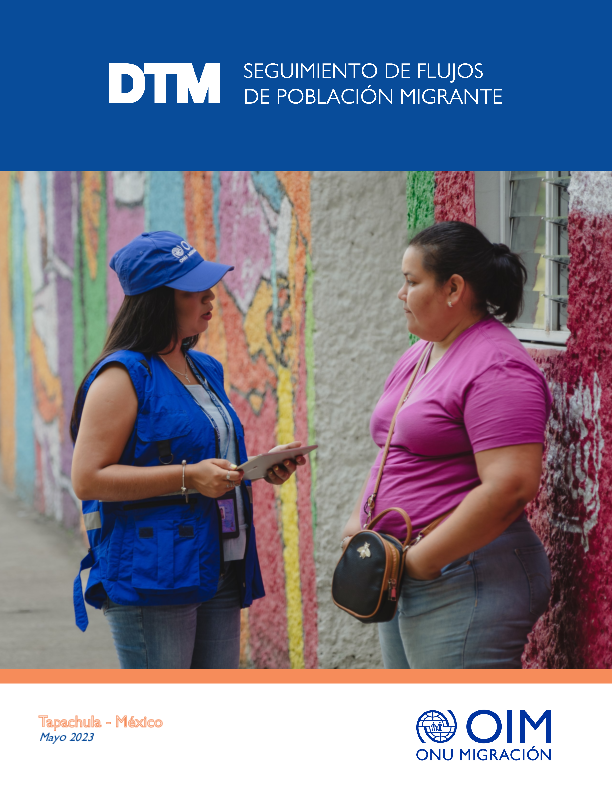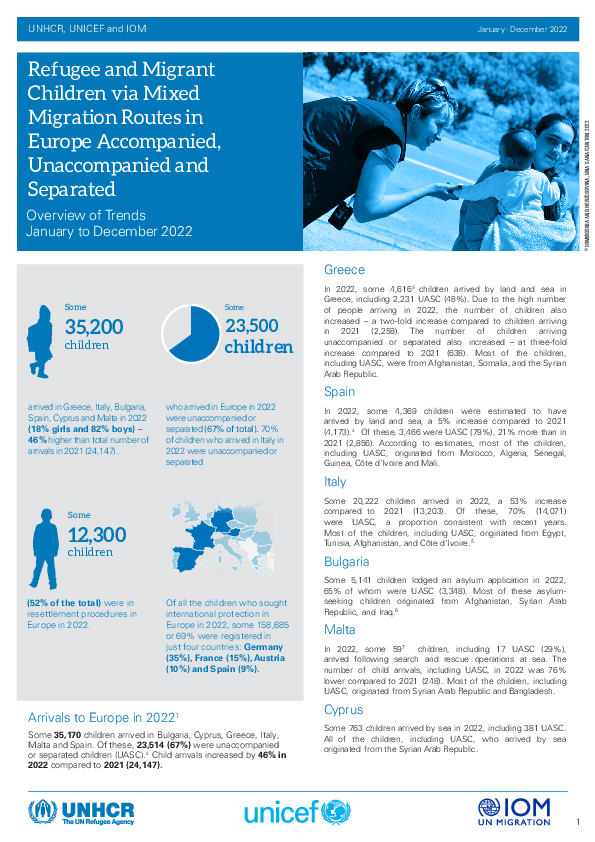-
Countries
-
Data and Analysis
-
Special Focus
-
Crisis Responses
Contact
dtmuganda@iom.int vwabwire@iom.in
Location
Uganda
Activity
- Mobility Tracking
- Baseline Assessment
Period Covered
Aug 01 2023 -Aug 31 2023
In August 2023, 2904 individuals and 864 households were affected. 1041 individuals and 24 households were internally displaced.
Population Groups
Survey Methodology
Unit of Analysis Or Observation
Type of Survey or Assessment
Keywords
Geographical Scope
Administrative boundaries with available data
The current dataset covers the following administrative boundaries
IOM works with national and local authorities in order to gain a better understanding of population movements throughout Southern Africa. Through
the setup of Flow Monitoring Points (FMPs), IOM seeks to quantify migration flows, trends and routes and to gain a better understanding of the profiles of observed individuals at entry, transit or exit points (such as border crossing posts, bus stations, rest areas, police checkpoints and reception centres). This report is an overview of the data collected in these FMPs from 1 to 31 August 2023. Inter-regional migration from and within the Southern Africa is categorized along the following corridors. The Flow Monitoring Points (FMPs) were set-up in several key transit locations along the corridors to track the movements of passengers:
• Zimbabwe (Mutare) – Mozambique (Manica)
• Zimbabwe (Chirundu) – Zambia
• Zimbabwe – Botswana (Plumtree)
• Zimbabwe – South Africa (Beitbridge)
• Malawi (Mchinji) – Zambia (Mwami)
• Malawi (Karonga) – United Republic of Tanzania
• Malawi (Mwanza) – Mozambique (Zobue)
• Malawi (Mangochi) – Mozambique
• Mozambique (Ressano Garcia) – South Africa
Over the reporting period a total of 71,106 movements were observed across 43 FMPs in the region. The Zimbabwe – South Africa (Beitbridge) corridor hosted the largest number of movements with 42,394 (60%), followed by the Malawi (Mwanza) – Mozambique (Zobue) corridor with 10,038 (14%) and the Zimbabwe (Chirundu) – Zambia corridor with 5,764 (8%) movements reported.

Contact
iommexicodtm@iom.int
Language
Spanish
Location
Mexico
Period Covered
Aug 01 2023
Aug 31 2023
Activity
- Flow Monitoring
- Event Tracking
Este ejercicio considera Ciudad Juárez durante el mes de agosto 2023. La OIM realizó 279 encuestas aleatorias e individuales, las cuales consideran 638 personas en el grupo familiar.

Contact
iommexicodtm@iom.int
Language
Spanish
Location
Mexico
Period Covered
Jul 01 2023
Jul 31 2023
Activity
- Flow Monitoring
- Event Tracking
En este ejercicio se considera Tapachula durante el mes de julio 2023. La OIM realizó 307 encuestas aleatorias e individuales, las cuales consideran 588 personas en el grupo familiar.

Contact
iommexicodtm@iom.int
Language
Spanish
Location
Mexico
Period Covered
Jul 01 2023
Jul 31 2023
Activity
- Flow Monitoring
- Event Tracking
Este ejercicio considera Tenosique durante el mes de julio 2023. La OIM realizó 165 encuestas aleatorias e individuales, las cuales consideran 338 personas en el grupo familiar.
- Some 35,200 children arrived in Greece, Italy, Bulgaria, Spain, Cyprus and Malta in 2022 (18% girls and 82% boys) – 46% higher than total number of arrivals in 2021 (24,147).
- Some 23,500 children who arrived in Europe in 2022 were unaccompanied or separated (67% of total). 70% of children who arrived in Italy in 2022 were unaccompanied or separated
- Some 12,300 children (52% of the total) were in resettlement procedures in Europe in 2022.
- Of all the children who sought international protection in Europe in 2022, some 158,685 or 69% were registered in just four countries: Germany (35%), France (15%), Austria (10%) and Spain (9%).

Contact
iommexicodtm@iom.int
Language
Spanish
Location
Mexico
Period Covered
Jul 01 2023
Jul 31 2023
Activity
- Flow Monitoring
- Event Tracking
En este ejercicio se consideran las encuestas realizadas en Tijuana, Baja California entre el 1 y el 31 de julio de 2023. Se encuestaron 263 personas, así como 758 en el grupo familiar.

Contact
iommexicodtm@iom.int
Language
Spanish
Location
Mexico
Period Covered
Jul 01 2023
Jul 31 2023
Activity
- Flow Monitoring
- Event Tracking
En este ejercicio se consideran las encuestas realizadas en Ciudad Juárez, Chihuahua entre el 1 y el 31 de julio de 2023. Se encuestaron 312 personas, así como 571 en el grupo familiar.

Contact
iommexicodtm@iom.int
Language
Spanish
Location
Mexico
Period Covered
May 01 2023
May 31 2023
Activity
- Flow Monitoring
- Event Tracking
En este ejercicio se considera Tenosique, Tabasco durante el mes de mayo 2023. Se seleccionó el municipio de Tenosique por ser de los principales puntos por los que transitan las personas migrantes que ingresan al país por la frontera sur. La OIM realizó 171 encuestas aleatorias e individuales, durante mayo 2023 en diferentes puntos del municipio.

Contact
iommexicodtm@iom.int
Language
Spanish
Location
Mexico
Period Covered
May 01 2023
May 31 2023
Activity
- Flow Monitoring
- Event Tracking
En este ejercicio se consideran Tapachula, Chiapas durante el mes de mayo 2023. Se seleccionó municipio de Tapachula por ser de los principales puntos por los que transitan las personas migrantes que ingresan al país por la frontera sur. La OIM realizó 211 encuestas aleatorias e individuales, durante mayo 2023 en diferentes puntos del municipio.


